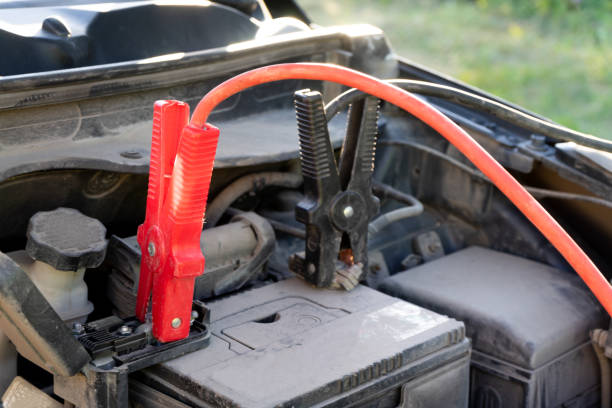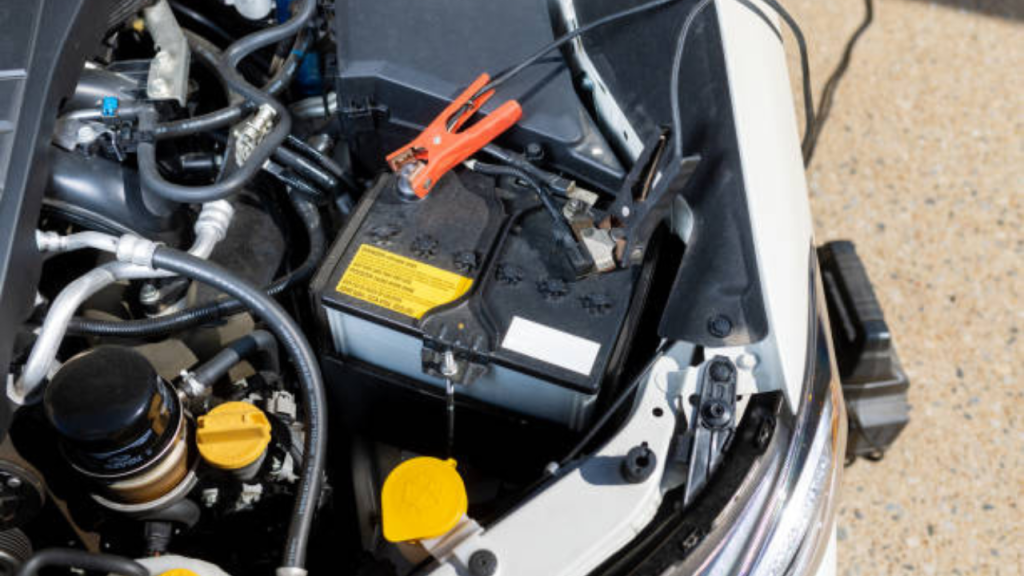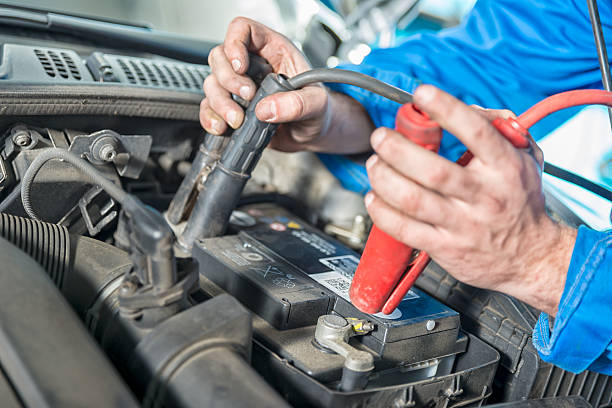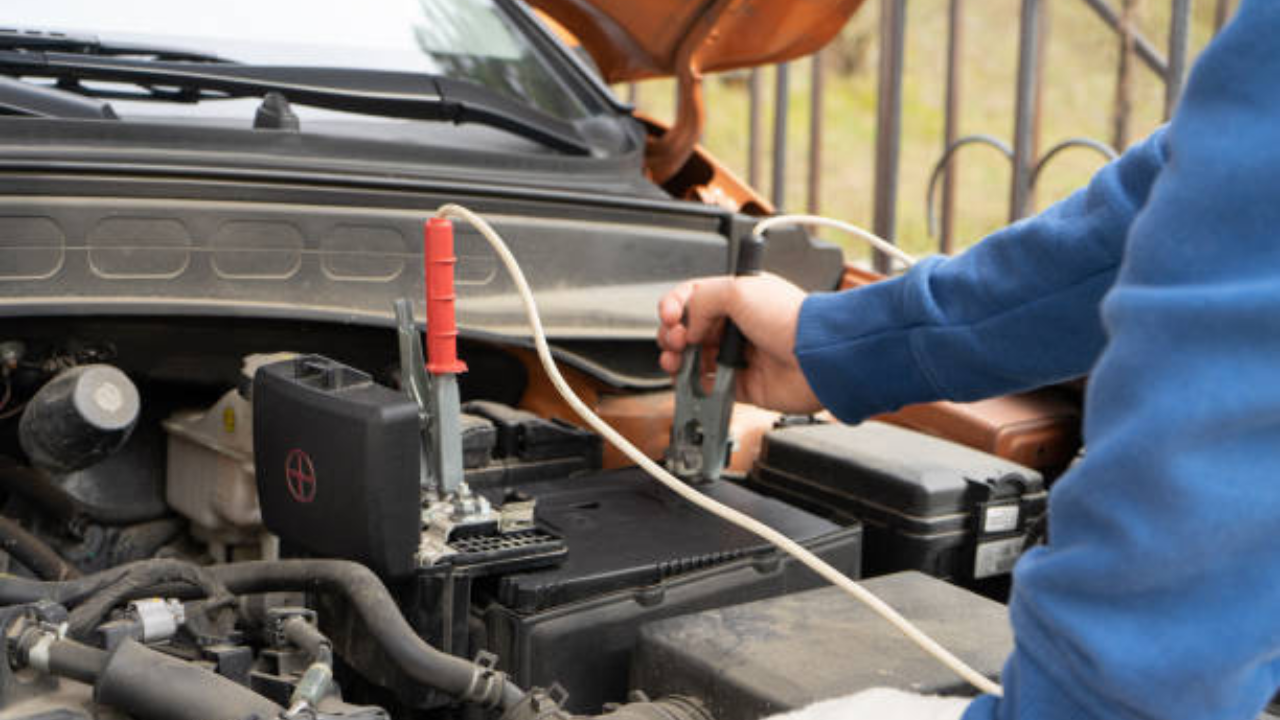Charging a car battery at 2 amps typically takes around 24 hours. Car battery charging at 2 amps is a common practice for slow and steady charging, ideal for maintaining the battery’s health and prolonging its lifespan.
It’s essential to follow proper charging procedures to ensure safety and efficiency. We will discuss the optimal charging duration for a car battery at 2 amps, how to calculate the charging time, and some essential tips for maintaining a healthy car battery.
By the end, you’ll clearly understand how long it takes to charge a car battery at 2 amps and how to keep your vehicle’s battery in top condition.
Factors Affecting Charging Time
Battery Size And Capacity
The size and capacity of a car battery play a crucial role in determining the charging time. Larger batteries with higher capacity require more time to charge than smaller ones.
A larger battery may take around 24 hours to charge at 2 amps, whereas a smaller one may only take 8-12 hours.
Discharge Level
The discharge level of a car battery also affects the charging time. If the battery is deeply discharged, it will take longer to charge compared to a battery that was only partially discharged. A deeply discharged battery may take 24-48 hours to fully charge at 2 amps, while a partially discharged one may take 12-24 hours.
Charger Output
The output of the charger is another critical factor. A charger with a higher output can charge a battery more quickly. However, when charging at 2 amps, the charger’s output is fixed. Different chargers may have different efficiencies, affecting the actual charging time, but at 2 amps, this impact is minimal.

Calculating Charge Time
Calculate the charging time based on the battery capacity to understand how long it takes to charge a car battery at 2 amps. Calculating charge time is essential to ensure that the battery receives the right amount of charge without overcharging or undercharging, which can impact its performance and lifespan.
Determine Battery Capacity
First, determine the battery capacity to calculate the charging time accurately. The battery capacity is measured in amp-hours (Ah), indicating how much charge the battery can hold. The battery capacity information is on the battery label or the vehicle’s manual.
Calculate Charging Time
Once you have the battery capacity, you can calculate the charging time at 2 amps using a simple formula: Charging time (in hours) = Battery capacity (in amp-hours) / Charging current (in amps).
For example, suppose the battery capacity is 60Ah. The formula would be 60Ah / 2A = 30 hours. It would take approximately 30 hours to charge a 60Ah battery at a total 2-amp charging rate.
Optimizing Charging Efficiency
Discover the optimal charging efficiency for your car battery by using a 2 Amps charger. Please find out how long it takes to charge your battery and ensure a hassle-free driving experience.
Using A Smart Charger
A smart charger is the key to optimizing charging efficiency when charging your car battery at 2 amps. Unlike traditional chargers, smart chargers are designed to automatically monitor and adjust the charging process based on the needs of your battery. You can use an intelligent charger to ensure your battery is charged to its optimal capacity without the risk of overcharging or undercharging.
With an intelligent charger, you can connect it to your car battery, set the charging rate to 2 amps, and let it do the work for you. The intelligent charger will analyze the battery’s voltage and adjust the charging current accordingly, providing a safe and efficient charging experience. This not only saves you time but also extends the longevity of your battery.
Avoiding Overcharging
Overcharging your car battery can lead to irreversible damage and significantly reduce lifespan. It is essential to avoid overcharging, especially when charging at 2 amps. To prevent overcharging, you can follow these simple steps:
- Monitor the Charging Process: Keep an eye on the charging process and disconnect the charger once the battery is fully charged. Most intelligent chargers have built-in features that indicate when the charging is complete.
- Follow the Manufacturer’s Guidelines: Refer to the battery manufacturer’s guidelines for the recommended charging time and voltage. This will help you avoid overcharging and ensure the battery is charged correctly.
- Consider a Timer or Trickle Charge: If you are concerned about overcharging, use a timer or set the charger to a trickle charge mode. This will automatically reduce the charging current once the battery reaches total capacity.
- Regularly Check the Battery’s Condition: Inspect your battery for any signs of swelling or leakage, as these can be indicators of overcharging. If you notice any issues, it is best to consult a professional for further assessment.
Maintaining Proper Wiring
Proper wiring is essential for maximizing charging efficiency and ensuring the safety of your charging setup. Here are some tips to maintain proper wiring:
- Use High-Quality Cables: Invest in high-quality cables specifically designed for charging applications. These cables have better conductivity and are less likely to overheat.
- Check for Loose Connections: Regularly inspect your wiring connections to ensure they are secure and corrosion-free. Loose connections can result in poor charging performance and potential safety hazards.
- Keep Cables and Wires Away from Heat Sources: Avoid placing your charging cables or wires near heat sources, as excessive heat can cause damage to the insulation and reduce the efficiency of the charging process.
- Properly Ground the Charging System: Ensure your charging system is properly grounded to minimize the risk of electrical shocks and shorts. Consult a professional electrician if you are unsure about the grounding requirements.

Benefits And Limitations Of 2 Amp Charging
When it comes to charging a car battery, various methods are available. One such method is the use of a 2 amp charger. This slow and steady charging technique offers several benefits and limitations to consider. This article will explore the advantages and drawbacks of charging your car battery at 2 amps.
Slow And Steady
A 2 amp charger provides a slow and steady charge to your car battery, gradually replenishing its energy levels. While it may take longer than higher amp chargers, this method offers unique advantages.
Longer Battery Lifespan
Charging your car battery at 2 amps can contribute to a longer lifespan for your battery. The slow charge rate allows the battery to fully absorb and distribute the energy evenly, minimizing the risk of overcharging. This helps prevent overloading the battery cells and reduces the degradation that can occur with faster charging methods.
With a longer battery lifespan, you can enjoy extended periods without needing battery replacements, saving you time and money in the long run.
Safe Charging Method
Using a 2 amp charger is generally considered a safe charging method. The slow charge rate reduces the risk of overheating the battery, which can occur with higher amp chargers. Additionally, the gradual recharge helps maintain the structural integrity of the battery, reducing the chances of leaks or damage.
This safer charging method is especially beneficial for older or weaker batteries that may be more susceptible to damage from fast charging.
Limitations Of 2 Amp Charging
While charging your car battery at 2 amps offers several benefits, it also has limitations. The most notable drawback is the longer charging time required. If you need a quick charge and don’t have the luxury of time, a higher amp charger may be a more suitable option.
Additionally, a 2 amp charger may be unable to revive completely drained batteries or those with severe damage. In such cases, professional intervention or a higher amp charger may be necessary to restore the battery’s functionality.
Conclusion
Charging your car battery at 2 amps can be an effective and safe method, offering benefits such as longer battery lifespan and reduced risk of damage.
However, it is essential to consider the limitations, including the longer charging time and the inability to revive severely drained batteries. By understanding the advantages and drawbacks, you can decide on the best charging method for your car battery.
Alternative Charging Methods
Our previous section discussed how long it takes to charge a car battery at 2 amps. However, using a 2-amp charger is just one of the alternative charging methods available to car owners. This section will explore three other methods: fast, trickle, and jump-starting. Each method has advantages and considerations, so let’s dive in and discover more about them!
Fast Charging
Fast charging, also known as rapid charging, is a method that allows you to charge your car battery at a higher amp rate than the average 2 amps. With fast charging, you can significantly reduce the charging time, making it a convenient option for those in a rush.
- Advantages of Fast Charging:
- It allows quicker charging times, perfect for when you need your car battery charged quickly.
- Convenient for emergencies or situations where time is of the essence.
- Considerations for Fast Charging:
- Fast charging may increase heat generation, potentially impacting the battery’s longevity.
- Not all car batteries are designed to handle fast charging, so checking your car battery’s manufacturer recommendations is essential.
Trickle Charging
Trickle charging, on the other hand, is a slow and gentle charging method that uses a low amp rate to charge your car battery gradually. This method is often used for long-term maintenance or to keep the battery fully charged when the vehicle is unused.
- Advantages of Trickle Charging:
- Prolong the life of your car battery by preventing deep discharge.
- Maintains a consistent charge, ensuring your battery remains ready for use.
- It is safe to leave connected for an extended period.
- Considerations for Trickle Charging:
- Trickle charging is a slow process, so it may not be suitable if you need your car battery charged quickly.
- Overcharging can damage the battery, so using a trickle charger with an automatic shut-off feature is essential.
Jump Starting
Jump starting is used when your car battery is completely dead, often due to leaving the lights on or other electrical issues. This method involves using another vehicle’s battery or an external power source to jump-start your car’s battery.
- Advantages of Jump Starting:
- It allows you to start your car even with a completely dead battery.
- It can be done quickly with the help of another vehicle or a portable jump starter.
- Considerations for Jump Starting:
- Jump starting is a temporary solution and should be followed by a proper charging method to replenish the battery fully.
- Incorrect jump-starting procedures can cause damage to your vehicle’s electrical system, so it’s vital to follow the manufacturer’s guidelines or seek professional assistance.

How long to charge a 12v battery at 2 amps
Charging time for a 12-volt battery at 2 amps depends on the capacity of the battery, measured in ampere-hours (Ah). The formula to calculate charging time is:
Charging Time (hours) = (Battery Capacity in Ah) / (Charging Current in Amps)
For example, if you have a 12-volt battery with a capacity of 24 ampere-hours and you’re charging it at 2 amps:
Charging Time = 24 Ah / 2 A = 12 hours
So, it would take approximately 12 hours to charge a 12-volt battery with a 24 ampere-hour capacity at a rate of 2 amps. Remember that this is a general calculation, and actual charging time may vary based on factors like the battery’s state of charge, charging efficiency, and the type of charger used.
How long does it take to charge a car battery with a 12-volt charger
The time it takes to charge a car battery with a 12-volt charger depends on several factors, including the battery’s state of charge, its capacity (measured in ampere-hours), and the charging current provided by the charger.
As a rough estimate, you can use the formula:
Charging Time (hours) = (Battery Capacity in Ah) / (Charging Current in Amps)
For example, if you have a car battery with a capacity of 60 ampere-hours and you’re using a 12-volt charger with a current output of 5 amps:
Charging Time = 60 Ah / 5 A = 12 hours
So, it would take approximately 12 hours to charge a 60 ampere-hour car battery with a 12-volt charger providing a 5-amp current.
Remember that actual charging times may vary, and it’s essential to monitor the charging process and disconnect the charger once the battery is fully charged to prevent overcharging. Additionally, some modern chargers may have features like smart charging, which can adjust the charging current and optimize the charging process based on the battery’s condition.
Should I charge my car battery at 2 amps or 10 amps
The appropriate charging current for your car battery depends on its capacity and the charger you’re using. It’s generally safe to charge a car battery at a low current, such as 2 amps, for a more extended period. However, if you need to charge the battery quickly, you can use a higher charging current, like 10 amps.
Here are some considerations:
- 2 Amps: Charging at 2 amps is a slower but safer option. It’s suitable for maintaining the battery charge or charging a battery that is not deeply discharged. It’s a good choice for long-term maintenance charging.
- 10 Amps: Charging at 10 amps is faster but requires more caution. This current is suitable for quickly charging a moderately discharged battery. However, using a high current for an extended period may generate heat, and excessive heat can damage the battery.
If you’re unsure about the appropriate charging current, it’s often a good idea to consult your car’s manual or the battery manufacturer’s recommendations. Additionally, many modern battery chargers have automatic settings that adjust the charging current based on the battery’s condition.
If you have time, charging at a lower current, like 2 amps, is more conservative and less likely to cause overheating. If you need a faster charge, you can use a higher current, like 10 amps, but monitor the charging process and disconnect the charger once the battery is fully charged to avoid overcharging.
Frequently Asked Questions For How Long To Charge A Car Battery At 2 Amps
How Long Does It Take To Charge A Car Battery At 2 Amps?
Charging a car battery at 2 amps usually takes around 24 hours. However, the exact time may vary depending on the battery’s state of charge, age, and size. It is important to note that slow charging at 2 amps is safer and helps extend the battery’s lifespan compared to rapid charging.
Is It Safe To Charge A Car Battery At 2 Amps?
Yes, charging a car battery at 2 amps is safe. Slow charging at a low amperage is recommended, as it helps maintain the battery’s health and prevents overheating. Charging may take longer but ensures a more efficient and safer charging process.
Can I Use A 2 Amp Charger To Charge My Car Battery?
You can use a 2 amp charger to charge your car battery. A 2-amp charger provides a slower charging rate, generally safer and better for the battery’s longevity. However, if you’re in a hurry, you might consider using a higher amperage charger, but keep in mind that fast charging can affect the battery’s lifespan.
Should I Charge My Car Battery At 2 Amps Or A Higher Amperage?
Slow charging at 2 amps is recommended for better battery health and longevity. Higher amperage charging can charge the battery faster but may generate more heat and potentially harm the battery. A lower amperage is generally best for a safer and more efficient charging process.
How long can I charge a 12-volt battery at 2 amps?
Charging a 12-volt battery at a rate of 2 amps will take approximately 6 hours to reach a fully charged state. This is a general estimate, and actual charging time may vary based on factors such as the battery’s state of charge, capacity, and efficiency of the charging system.
Is it better to charge a car battery at 2 amps or 10 amps?
It is generally better to charge a car battery at a lower rate, such as 2 amps, for a more extended period. Slow charging (lower amperage) helps maintain battery health and longevity by reducing the risk of overheating and promoting a more thorough charging process. Rapid charging (higher amperage) can generate heat and potentially lead to overcharging, harming the battery’s lifespan.
Can you overcharge a battery at 2 amps?
In most cases, charging a battery at 2 amps is considered a safe and slow charge rate, minimizing the risk of overcharging. However, using a proper charger with a built-in automatic shut-off or an intelligent charger designed to prevent overcharging is essential. While the risk is low at 2 amps, following manufacturer guidelines and using appropriate charging equipment is crucial to avoid potential issues.
Can you leave a 2-amp battery charger on all night?
It is generally safe to leave a 2-amp battery charger on all night. Many modern chargers are designed with automatic shut-off features or are “smart” chargers, meaning they will adjust the charging rate and stop charging once the battery is fully charged. Always follow the manufacturer’s recommendations and instructions for your specific charger to ensure safe and effective use.
Can you charge a 12V battery with a 2 amp charger?
Yes, you can charge a 12V battery with a 2-amp charger. Charging at a lower rate, such as 2 amps, is a common practice to promote battery health and prevent issues like overheating. Ensure the charger is suitable for your battery type and follow the safety guidelines provided by the charger manufacturer.
Should you charge a 12-volt battery at 2 amps or 10 amps?
It’s generally better to charge a 12-volt battery at a lower rate, such as 2 amps, for a more gradual and safer charging process. Slow charging helps maintain battery health and longevity. Rapid charging at 10 amps may generate heat and increase the risk of overcharging, potentially affecting the battery’s lifespan.
Can you overcharge a 12 volt battery on a 2 amp charger?
While the risk is lower, it is still possible to overcharge a 12-volt battery with a 2-amp charger. It’s essential to use a charger with an automatic shut-off feature or a smart charger to prevent overcharging. Always follow the manufacturer’s guidelines and monitor the charging process to ensure the battery’s safety and longevity.
Conclusion
To conclude, charging a car battery at a 2-amp rate can take a significant amount of time. You are exercising patience, and giving the battery enough time to recharge correctly is crucial. Remember to maintain caution and follow safety guidelines to ensure your car battery’s longevity.
Understanding the charging process and adhering to the recommended charging times will help keep your car battery functioning optimally.

I am a technology Specialized writer and blogger based in the USA & UK. I have four years of experience in Technology, Social Media and all types of Battery’s like Solar Battery,Car Battery,Lithium Battery etc. So I work on solving these issues and give various tips on these issues.
